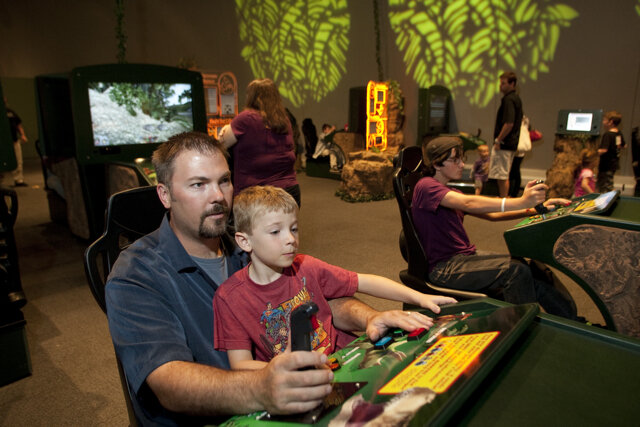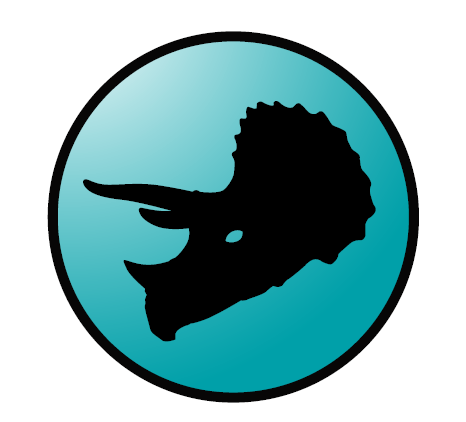
Fueled by their innate drive to “win” at being a dinosaur, kids are motivated to engage in a scavenger hunt to acquire information within the exhibit and then apply it in the game.
This reinforces a cyclical flow of learning, between the physical exhibit and the interactive simulation.
A scientific scavenger hunt
the world around me
defines an ecosystem and discusses the role of plants and animals in balancing the environment.
do I live alone or in groups?
explores whether dinosaurs were solitary or social animals. What are the benefits and drawbacks to these lifestyles and how would that affect an animal’s behavior?
how do I use my senses?
How do an animal’s senses affect behavior? How we can determine the capabilities of an animal from fossil evidence?
how do I find food?
Was T. rex a hunter, a scavenger or both? Experience the evidence for and against as well as the benefits and risks. Visitors try out these behaviors and form their own opinions on the subject.
how do I stay healthy?
explores illness and injury in the fossil record, strategies for staying healthy and safe in the virtual Cretaceous simulation.
do I hunt alone or in packs?
Were tyrannosaurs solitary or social animals? Explore the evidence for and pros/cons of each lifestyle in the simulation and form your own opinion.
how do I behave in groups?
explores social interaction between animals of the same species.
how do I find plants to eat?
The basics of nutrition and digestion, plant species, their roles in the ecosystem, and their modern relatives.
creatures that share their world
provides an overview of the other animals (mammals, reptiles, birds, fish, insects and amphibians) that lived in the Late Cretaceous.
T. rex and the lives of carnivores
discusses Tyrannosaurus rex as an example of a carnivorous animal, including what its anatomy suggests about possible behavior.
do i defend myself?
explores what the anatomy of an animal suggests about how it might have protected itself. Explores “fight or flight”, the ways in which an animal might defend itself.
the lives of herbivores
A look at triceratops and edmontosaurus, the most numerous herbivores of the time, as examples of plant eating animals. Discusses what their anatomy suggests about possible behavior.












